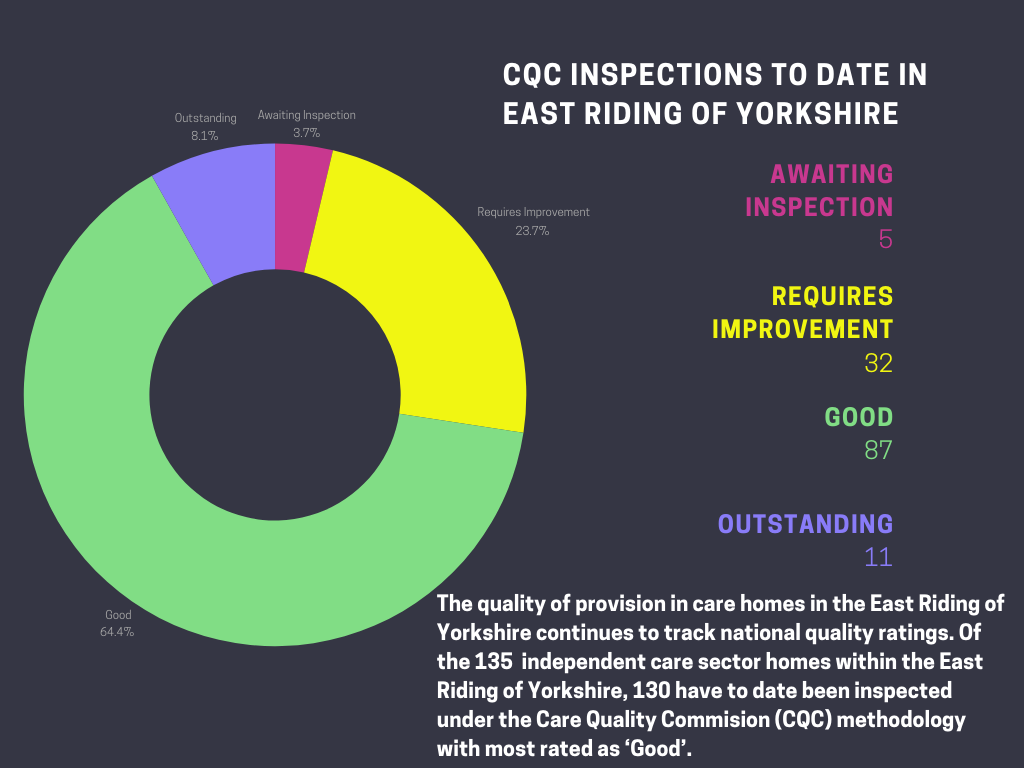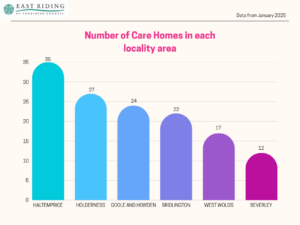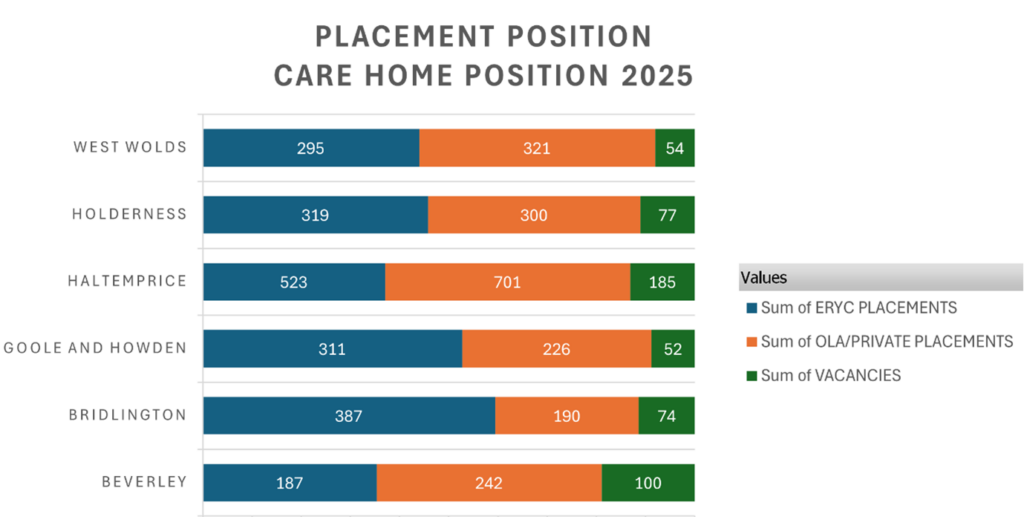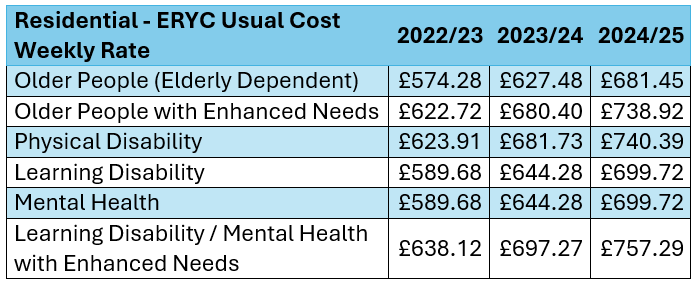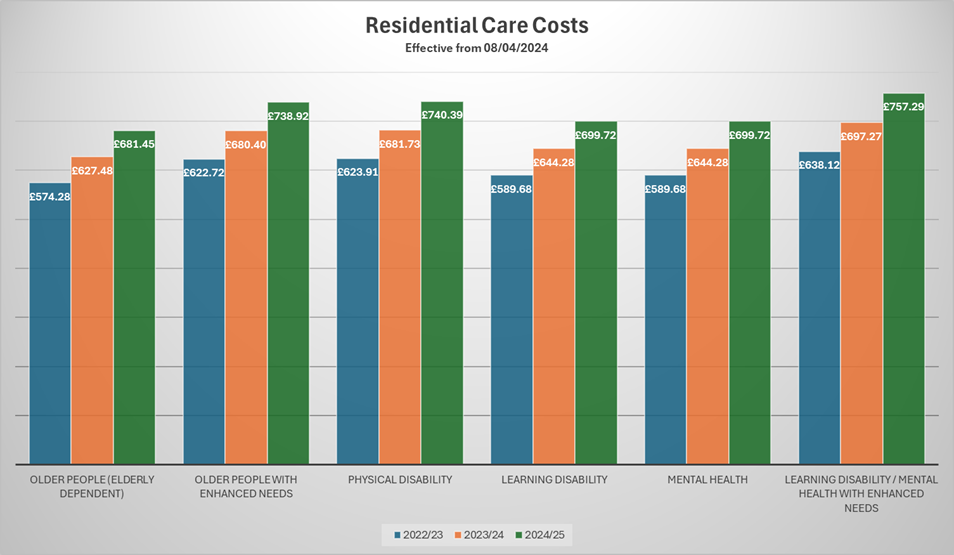
We have developed good working relationships with the independent providers who deliver care in both residential and community settings in the East Riding. We strive to improve those relationships and build on the work that is being delivered to ensure services are safe, good quality and affordable. We are committed to working together to address issues and identify emerging trends through various approaches and encourage feedback from partners at every stage of the process.
We work collaboratively to try and ensure that services, and the businesses that deliver them, are sustainable and can meet the challenges that emerge from the changing landscape across health and social care. We support providers to utilise technology and we provide training and support for staff across the independent sector.
Market Pressures
The key market pressures currently experienced across the East Riding are listed below. These not only inform our actions now but also our commissioning priorities moving forward.
We are currently focusing on the following pressures:
-
-
- Lack of appropriate care and support facilities for younger adults with complex care needs
- A general lack of nursing and nursing dementia placements
- Lack of complex dementia placements
-
CQC Ratings and Information
*CQC Inspection Information correct as of March 2025
Current Profile of Commissioning Activity and Future Plans
There are 137 Care Homes currently registered in the East Riding. These are located in the following areas:
We are currently commissioning 4,523 registered beds. 265 of these are nursing beds with the remaining 4,258 being residential for all categories including Learning Disability and Mental Health with an average occupancy level of 88.48%.
East Riding of Yorkshire has a larger percentage of the population aged over 65 than the regional and national average, making up 26.4% of the total. The proportion of people aged over 65 is projected to increase to 34% by 2041.
As of January 2025, 72.9% (100) of our homes are rated outstanding or good with none being rated inadequate.
The largest commissioned geographical area is Haltemprice with 26% of beds followed by Bridlington with 19%, Holderness with 16%, West Wolds and Goole and Howden with 15% and Beverley with 9%.
Occupancy levels remain constant with all areas being over 80% of capacity. West Wolds has the highest occupancy with 91% followed by Bridlington, Goole and Howden and Holderness with 89%, Haltemprice with 88%, and Beverley with 83%.
In April 2020 the average occupancy across all care homes in East Riding was 93%. This reduced to 83% by April 2021 and showed a limited recovery by April 2022 to 86%. As of January 2025, the average occupancy is 89% across all care homes in the East Riding.
Average occupancy in homes providing residential care to elderly people was at 90% in January 2025. Geographical variations in occupancy levels across the area will be one of the considerations in the Council’s market shaping work. For residential care for elderly people occupancy ranges from 83% to 91% across the six care assessment areas.
The care home market has been relatively stable with only one homes closures among those providing care to older people in the last two years.
We expect there to be some care home exits in the next few years and some homes may need to change their service provision. This reflects both the recent reduction in demand for ‘traditional’ residential care and the financial uncertainties faced by several homes. Providers should work towards offering person centred and enabling approaches.
Residential and Nursing Care Costs
Below are breakdowns for Residential and Nursing care costs for 2023/24 & 2024/25. Click on each image to view in more detail.
*Social Care Date Effective: 08/04/2024 **FNC Date Effective: 01/04/2024 FNC is set by the CCG

Future Intentions
The Council continues to work with the marketplace to understand and agree a structure which ensures that the future commissioning of residential and nursing care is undertaken at rates that are realistic and sustainable for the Council, the provider, and those in receipt of the care provided. Where possible, clients should be empowered to understand their care requirements and have an active part in deciding their care outcomes.
We are continuing to review all contracted care home provision to ensure we can meet demand and explore flexible utilisation of both short and long-term bed provision. We will work with providers to strengthen the process for admissions to care homes 7 days a week, with a focus on discharge from hospital; engage further in the use of Technology Enabled Care where this will support the outcomes of residents; and increase links with local communities.
The vision for Adult Social Care is to promote independence, wellbeing and choice that will support individuals in achieving their full potential in healthier communities. It is our aim to ensure our approach is person centred, accessible, flexible and responsive for those in greatest need. The Council is dedicated to providing quality responses that are sustainable and flexible in order to meet current and future needs and demands.
Last Updated on May 9, 2025



